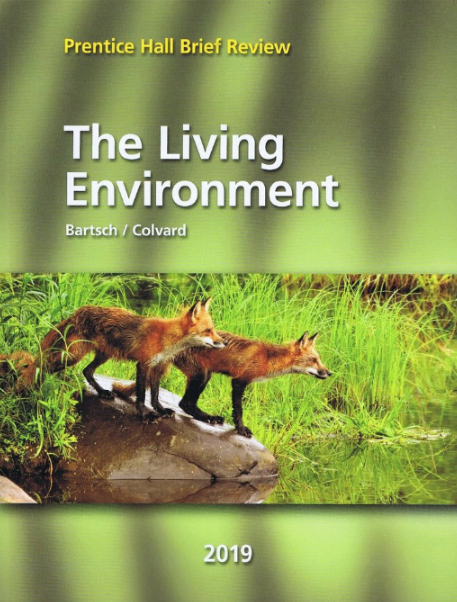
Prentice Hall Brief Review: The Living Environment 2019
ISBN: 9781418292164
Textbook solutions
All Solutions
Section 6.5: Environmental Changes
Exercise 46
Step 1
1 of 2
The answer is 1. Succession is a process in ecosystems wherein they undergo change in habitat. This change may either be primary or secondary. This may be caused also by sudden change.
Result
2 of 2
1
Exercise 47
Step 1
1 of 2
The answer is 4. By the process of ecological succession, the original habitat undergoes succession wherein it makes the original habitat more habitable not just to only one species, but to many species that can adapt to the certain environment.
Result
2 of 2
4
Exercise 48
Step 1
1 of 2
The answer is 1. The decrease in water depth is due to the accumulation of sediments formed from the organic products created by dead plants or organisms. These debris pile up resulting in a more shallow ground thereby decreasing the water depth.
Result
2 of 2
1
Exercise 49
Result
1 of 1
If fire occurred and burned all the vegetation, there would be difficulty in succession. Altering the normal stability of a certain environment or ecosystem can result in a slow progression of succession.
Exercise 50
Step 1
1 of 2
The answer is 1. Succession is a process in ecosystems wherein they undergo change in habitat. This change may either be primary or secondary. This may be caused by sudden change.
Result
2 of 2
1
Exercise 51
Result
1 of 1
As succession progress, certain species also undergo succession wherein it creates a more stable and more habitable environment for other species that have the ability to adapt. The goal of succession is to make the environment a new habitat for new species.
Exercise 52
Step 1
1 of 2
The answer is 2. When a certain ecosystem undergoes destruction caused by nature or human works, the natural habitat becomes unstable and makes it harder to recover or stabilize again thereby delaying or prolonging the process of succession.
Result
2 of 2
2
Exercise 53
Step 1
1 of 2
The answer is 3. Succession is a process in ecosystems wherein they undergo change in habitat. This change may either be primary or secondary. This may be caused by sudden change.
Result
2 of 2
3
Exercise 54
Step 1
1 of 2
The answer is 4. Succession is a process in ecosystems wherein they undergo change in habitat. This change may either be primary or secondary. This may be caused by sudden change.
Result
2 of 2
4
Exercise 55
Step 1
1 of 2
The answer is 4. As seen in the passage, a certain change in the environment triggered the growth of a new species. This is for the habitat to grow a more adaptive species that can survive certain changes in the environment.
Result
2 of 2
4
Exercise 56
Result
1 of 1
Changes from A through C is caused by succession, the process wherein the ecosystem changes in order to cater more species that can adapt to sudden changes in the environment.
Exercise 57
Result
1 of 1
One human activity responsible for the change from C to D would be excessive deforestation. Deforestation is the process of cutting down trees for the production of a variety of things needed by man or for the development of a certain infrastructure.
Exercise 58
Result
1 of 1
The soil and vegetation would be altered. Assuming there would be no natural disaster or human interference, succession of the ecosystem would happen creating a new habitat for other species.
Exercise 59
Step 1
1 of 2
The answer is 3. This is also an example of succession wherein the progression of species adapting is shown. Those species originally living in that habitat becomes incapable of adapting to the new changes in the ecosystem.
Result
2 of 2
3
unlock

